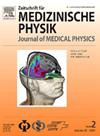Space agency-specific standards for crew dose and risk assessment of ionising radiation exposures for the International Space Station
Abstract
The Partner Agencies of the International Space Station (ISS) maintain separate career exposure limits and shared Flight Rules that control the ionising radiation exposures that crewmembers can experience due to ambient environments throughout their space missions. In low Earth orbit as well as further out in space, energetic ions referred to as galactic cosmic radiation (GCR) easily penetrate spacecraft and spacecraft contents and consequently are always present at low dose rates. Protons and electrons that are trapped in the Earth’s geomagnetic field are encountered intermittently, and a rare energetic solar particle event (SPE) may expose crew to (mostly) energetic protons. Space radiation protection goals are to optimize radiation exposures to maintain deleterious late effects at known and acceptable levels and to prevent any early effects that might compromise crew health and mission success. The conventional radiation protection metric effective dose provides a basic framework for limiting exposures associated with human spaceflight and can be communicated to all stakeholders. Additional metrics and uncertainty analyses are required to understand more completely and to convey nuanced information about potential impacts to an individual astronaut or to a space mission. Missions to remote destinations well beyond low Earth orbit (BLEO) are upcoming and bestow additional challenges that shape design and radiation protection needs. NASA has recently adopted a more permissive career exposure limit based upon effective dose and new restrictions on mission exposures imposed by nuclear technologies. This manuscript reviews the exposure limits that apply to the ISS crewmembers. This work was performed in collaboration with the advisory and guidance efforts of International Commission on Radiological Protection (ICRP) Task Group 115 and will be summarized in an upcoming ICRP Report.

 求助内容:
求助内容: 应助结果提醒方式:
应助结果提醒方式:


